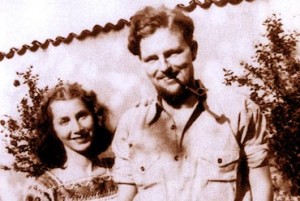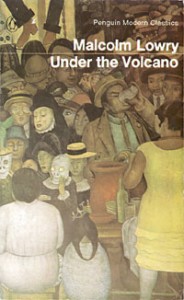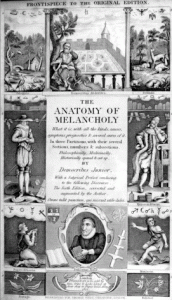Desperation and fear. A deep-rooted struggle to feel alive and function in a meaningful way. What exactly is this artistic temperament that is so often associated with the arts? It is to some degree a measure borne of the frustration and inability to cope with problematic circumstances. The manifestation of dramatic swings in emotion could then be applied as an evasion of various ”issues” difficult for the artist to confront. This could be opposing pressures of tradition and change for example. The artistic temperament is often attributed to being elements of an artists creative activity. One specialist has argued that the active and creative component of artistic temperament ( the ”originators” as opposed to the passive-receptive, the ”appreciators”) is a mixed curse and this over consciousness places the creative artist higher on the scale of existence than others. Is this a divine right of Kings proper justification for a marauding unbridled ego or a question of acceptance …”It is what it is”.
”The artistic temperament is a disease that affects amateurs… Artists of large and wholesome vitality get rid of their art easily, as they breathe easily or perspire easily. But in artists of less force, the thing becomes a pressure, and produces a definite pain”.(G.K. Chesterton, British Author 1874-1936) This is a categoric opinion, in a sense refreshing and attractive but perhaps intentionally simplistic as well. A rule of thumb made relevent by the exceptions and not the norm. At its extreme, Chesterton is correct to refute the romantic inclination to idolize severe strains of dysfunctional behavior as being essential to the creative process.However, the soft form of hyperthymic temperament (artistic temperament) known as cycloid may provide the inspiration and intensity needed to be ingredients for creative achievement despite a propensity for a stormy life. This is because the alternation between sadness and emotion in the severe case is seen as incompatible with creativity.
”Touched With Fire” is a book that makes a compelling argument for a direct relationship between clinical depression and creative activity. Author Kay Redfield Jamison researched the written archives of Byron, Van Gogh, D.H. Lawrence and Virginia Woolf among others and applied their correpondences and artistic output over the template she had established. Jamison’s conclusion supported an overlap between madness and art. Herman Melville is quoted as saying the following with regard to melancholy:”A distress of the soul that is also indispensable as a catalyst of the artistic imagination”.
Malcolm Lowry is credited as being one of the greatest novelists of the 20th Century on the basis of the literary masterpiece”Under The Volcano”. A style that appropriates heavily from James Joyce yet weaves multiple layers of structure into the plot moving towards a reunion of subplots which are all tied together through a competition among anguished and volatile interests.Under The Volcano is a brooding examination of some shadowy corners of the human heart. There is an attraction and repulsion at play that navigates a fine line between prophetic inspiration and manic delusion. Melancholy permeates throughout peppered with flashes of artistic inspiration.Its a novel that pursues a directive outside known literary trends. The tragic melancholy contrasts with characters who are redeeming and likeable. the protagonist,Geoffry Firmin, a British consul in a Mexican backwater is a chronic alcoholic, like Lowry, who can only find meaning and be coherent in a state of inebriation. Lowry is not an apologist or moralist.The novel was written in 1939 at the oubreak of war and it seems like a bookmark for this era and has striking similarities with ”Last of The Just” by Andre Shwarz-Bart. Firmin is a ”just man” who’s destiny is to absorb the suffering of our time. Both novels are semi-autobiographical, dream-like and surreal yet earthbound. The greatness of Under The Volcano lies in reconciling opposing forces antagonistic and contadictory without any semblance or regard to the notion spatial or temporal considerations. Lowry has an ambivalence towards modernism yet the novel is modern and abstract. There is a fear of modern civilization and rampant consumerism yet the book is avant-garde, a precursor to the beat style of Kerouac,Ginsberg, and Burroughs as the internal monologues, perceptions and references lend themselves to the idiom of the counterculture.
Lowry is described by his auto-biographer as having ”free floating anxiety neurosis” which opened a pandora’s box whereby Lowry was able to be afraid of anything and this accumulation of acute fears played a role in destroying him. However, the ”tempestuous object relations” often created unique life situations that could be immortalized in an artistic medium. Alchohol for Lowry, is a metaphor for human failure of far reaching consequences. Lowry was engrossed with the occult and mystical teachings of Aleister Crowley while completing Under The Volcano and led to this quotation: ”The agonies of the drunkard find their most accurate poetic analogue in the agonies of the mystic who has abused his powers”.
 ght="201" />
ght="201" />Jan Gabriel and Malcolm Lowry

Diego Rivera 1924
There is no question that Lowry had a hyperthymic temperament. Some believe that the artistic temperament may develop consciously in response to the individual artists belief that this is how artists should behave in order to fit an artistic identity or culture. Its a question of the chicken and the egg. However it can be established that in general sudden mood swings can be triggered by an exalted passion about subjects,a radical dedication to certain goals, and a hyper awareness or obliviousness to the presence of others. However, Lowry did work energetically to promote his own image as a literary ”bad boy”. This was furthered by apparently being drawn into black magic and occult forces while living in a squatters cabin north of Vancouver in the early 1940’s.
Lowry fell under the influence of Charles Stanfeld-Jones, a former disciple of Aleister Crowley and member of the inner circle of Crowley’s Hermetic Students of The Golden Dawn. Stanfeld-Jones was an expert on Cabbala and taught Lowry and his wife, Marjerie Bonner, how to astrally project. The unleashing of wanton occult forces led to Lowry being plagued by unfortunate disasters including a fire in his house that burned all his texts with the exception of Under The Volcano. One writer claims that Volcano is cabbalistically written.The original manuscripts were rejected in 1940 only to be accepted four years later after thorough revisions.One wonders how many other artists have drawn on obscure forces whether by a conscious tuning or by accidentally being susceptible to different forms of channeling.






 COMMENTS
COMMENTS
I’m not asserting a position of rightness or writeness, but The article, the sources and the nuances presented in the story are plausible but …. certainly does not take to be the truth in its entirety. However, the case of Lowry is a representative study of a particular cluster of attributes that does have to be accounted for.
Best,
Dave